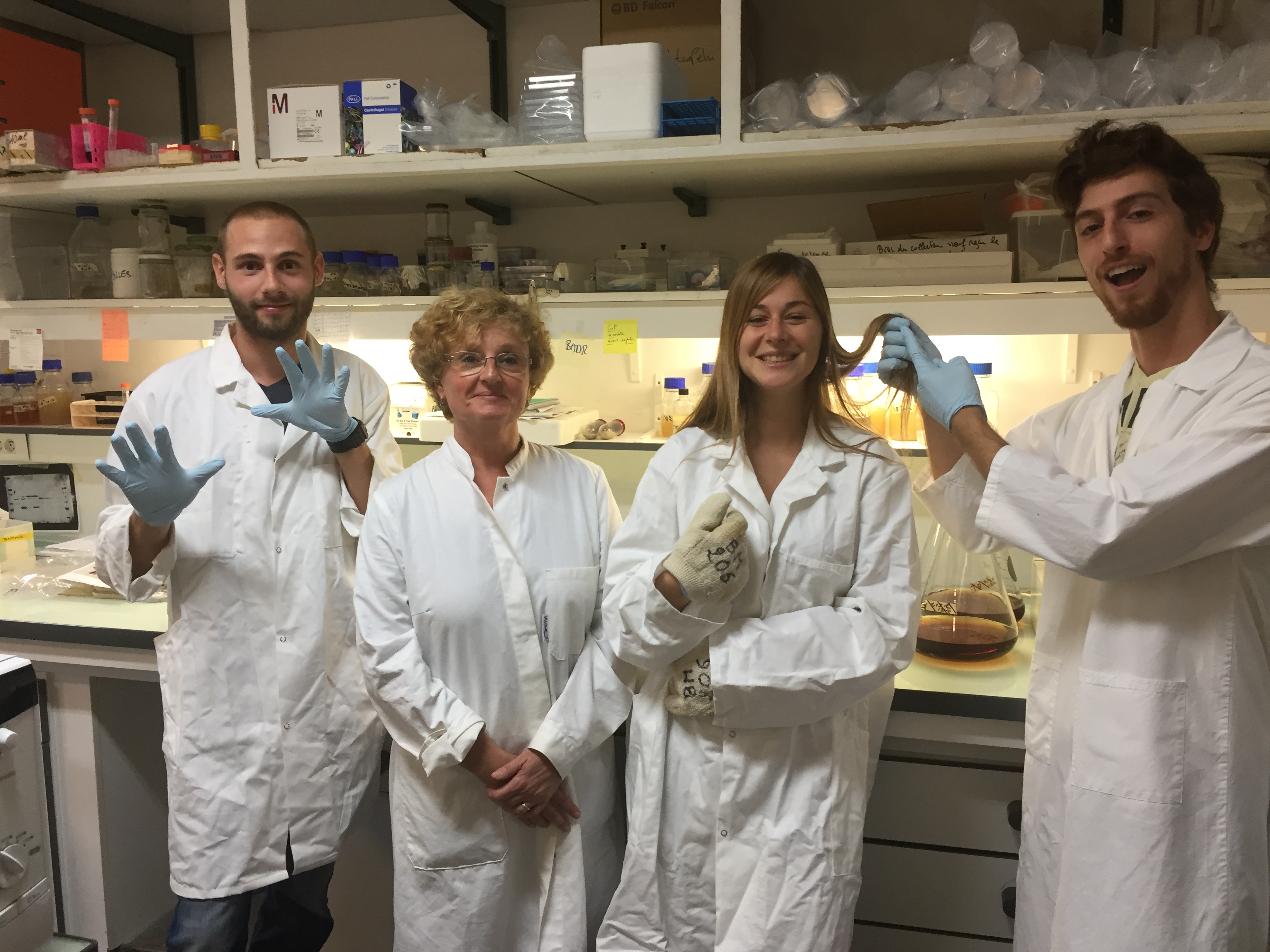(→Safe Applications) |
|||
| (44 intermediate revisions by 6 users not shown) | |||
| Line 1: | Line 1: | ||
| − | {{:Team:Aix-Marseille/Template-Top|Safety}} | + | {{:Team:Aix-Marseille/Template-Top|Safety}} |
| − | + | ==Safe Project Design== | |
| − | + | ||
| − | + | During our project the only bacteria we used were several ''Escherichia coli'' strains that were on the white list. Namely, we used TG1 for the most part of the summer. At the beginning we used DH5 alpha for our cloning experiments but since TG1 strains showed faster and better results we made the switch. We used the W3110 strain for our swimming tests. Finally, we used single-gene knockout strains from the Keio collection for some HPLC and swimming tests. | |
| − | + | As for viruses, we only used a P1 bacteriophage for our transduction experiments. | |
| − | + | ==Safe Applications== | |
| − | + | When we were researching Scale-up opportunities for our project, we realized that releasing genetically modified bacteria into an open system is reckless and unsafe. Bacteria can easily transfer resistance to antibiotics from one strain to another by horizontal gene transfer or even disturb the local flora and gravely affect the ecosystem. Therefore, our process could only be applied in extremely controlled conditions. Thus, we decided to insert our process into existing [https://2016.igem.org/Team:Aix-Marseille/Integrated_Practices/Environment#Platinum_in_plants roadside vegetation and rainwater treatment systems]. | |
| − | + | ==Safe Lab Work== | |
| − | + | ||
| − | + | ||
| − | + | ||
| − | + | ||
| − | + | ||
| − | + | [[File:T--Aix-Marseille--Safety.jpeg|600px|center|thumb|Our trainer, Chantal Socia, and us]] | |
| − | + | Before the beginning of the competition, all of the team members participated to a safety training with Chantal Socia, a dedicated member of the Laboratoire d'Ingénierie des Systèmes Macromoléculaires [http://lism.cnrs-mrs.fr/ (LISM)]. | |
| + | Benches were regularly disinfected with bleach and one bench was dedicated for BET visualization procedures. We always wore lab coats and gloves for molecular biology (e.g., [https://2016.igem.org/Team:Aix-Marseille/Experiments/Protocols#Protocol_.234_:_Plasmid_DNA_purification Plasmid DNA Purification], [https://2016.igem.org/Team:Aix-Marseille/Experiments/Protocols#PCR PCR]) and biochemestry (e.g., [https://2016.igem.org/Team:Aix-Marseille/Experiments/Protocols#Electrophoresis Electrophoresis]), glasses and a mask were used for experiments such as [https://2016.igem.org/Team:Aix-Marseille/Experiments/Protocols#Protocol_.239_:_Cadaverin_HPLC_analysis prelimary HPLC protocol] (High Performance Liquid Chromatography) or [https://2016.igem.org/Team:Aix-Marseille/Experiments/Protocols#Protocol_.237_:_PCR_clean-up_and_gel_extraction gel extraction]. Biowastes and chemical wastes were sorted according to lab rules. Laboratory hoods were only used for [https://2016.igem.org/Team:Aix-Marseille/Experiments/Protocols#Derivatization_reaction HPLC derivatization reaction step]. | ||
| − | + | ===Safe Shipment=== | |
| − | + | No safety problems have been encountered in sending DNA parts to the Registry. | |
| − | + | {{:Team:Aix-Marseille/Template-Footer}} | |
| − | + | ||
| − | + | ||
| − | + | ||
Safety
Safe Project Design
During our project the only bacteria we used were several Escherichia coli strains that were on the white list. Namely, we used TG1 for the most part of the summer. At the beginning we used DH5 alpha for our cloning experiments but since TG1 strains showed faster and better results we made the switch. We used the W3110 strain for our swimming tests. Finally, we used single-gene knockout strains from the Keio collection for some HPLC and swimming tests.
As for viruses, we only used a P1 bacteriophage for our transduction experiments.
Safe Applications
When we were researching Scale-up opportunities for our project, we realized that releasing genetically modified bacteria into an open system is reckless and unsafe. Bacteria can easily transfer resistance to antibiotics from one strain to another by horizontal gene transfer or even disturb the local flora and gravely affect the ecosystem. Therefore, our process could only be applied in extremely controlled conditions. Thus, we decided to insert our process into existing roadside vegetation and rainwater treatment systems.
Safe Lab Work
Before the beginning of the competition, all of the team members participated to a safety training with Chantal Socia, a dedicated member of the Laboratoire d'Ingénierie des Systèmes Macromoléculaires [http://lism.cnrs-mrs.fr/ (LISM)]. Benches were regularly disinfected with bleach and one bench was dedicated for BET visualization procedures. We always wore lab coats and gloves for molecular biology (e.g., Plasmid DNA Purification, PCR) and biochemestry (e.g., Electrophoresis), glasses and a mask were used for experiments such as prelimary HPLC protocol (High Performance Liquid Chromatography) or gel extraction. Biowastes and chemical wastes were sorted according to lab rules. Laboratory hoods were only used for HPLC derivatization reaction step.
Safe Shipment
No safety problems have been encountered in sending DNA parts to the Registry.


